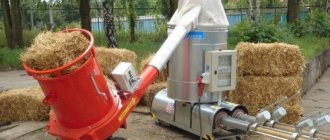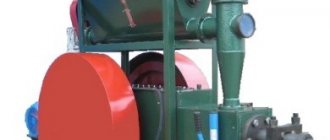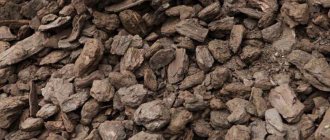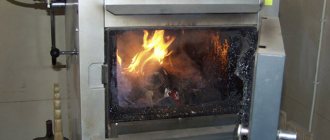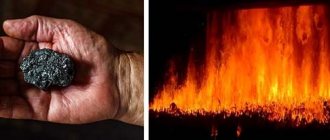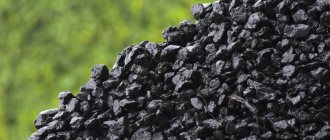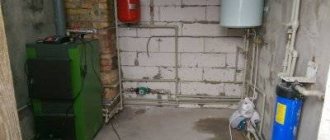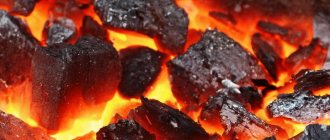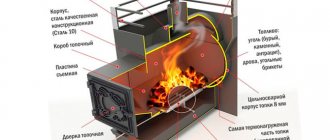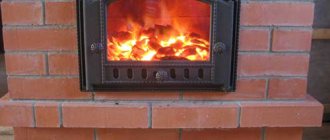It cannot be denied that sawdust briquettes are one of the most efficient types of solid fuel used for heating a home. They are high in calories (heat output is about 5 kW per 1 kg when burned), have a low ash content, and are also easy to store because they take up little space. But this fuel certainly cannot be called cheap; not everyone can afford to heat a boiler or stove with European wood throughout the entire season.
This is where many homeowners become interested - is it possible to somehow make fuel briquettes with your own hands? Especially when there are raw materials for this at a meager price. The solution to this issue is precisely the topic of this article. It will examine various technologies for producing briquettes from sawdust and other types of raw materials in production and at home. As a result, it will become clear under what circumstances it makes sense to take on this matter.
Methods for making briquettes
To get an idea of how you can make fuel briquettes with your own hands, you must first study how they are produced in a factory. The preparatory stage for any technology is the same and consists of grinding and drying the raw materials. These are, of course, sawdust and larger wood waste, which are processed to make briquettes. Then the raw material is dried in order to bring its moisture content to no more than 8-10%.
For reference. Also, various agro-industrial wastes (husks, seed husks) and even coal dust can serve as the starting material for the production of Euro-firewood.
Then the main operation begins - briquetting, in other words, sawdust pressing. Today this is done in two ways:
- Forming briquettes from sawdust on a hydraulic press.
- Production by extrusion method.
It must be said that with both technologies the result is achieved through strong compression of wood raw materials, as a result of which a natural component begins to be released from it - lignin. It serves as a binder for this crumbly mass; no other is provided. The only difference is in the compression method; in the first case, a hydraulic press for briquettes is used, developing a force of 300-600 Bar.
Due to such compression, the raw material spontaneously heats up, which only contributes to the formation of a strong rectangular “brick”. How a briquetting line with a hydraulic press functions is shown in the video:
This is how European firewood is squeezed out using a screw press
The extrusion method for producing briquettes from sawdust can be easily understood using the example of an ordinary home meat grinder or juicer. Raw materials are loaded into the receiving hopper of the unit and moved by a screw into a tapering conical working channel. There it is compressed, while the screw press for briquettes develops a monstrous force - up to 1000 Bar.
The output is firewood from sawdust in the form of a hexagon, which undergoes additional heat treatment and is cut to one size with a special knife. The sectional structure of a screw press for sawdust is shown in the drawing:
The main load falls on the auger (item 5) and the conical bushing (item 7), wear of the parts directly depends on the number of extruded briquettes
More about briquetting technology
At the beginning of the last century, Russian researcher A.P. Veshnyakov proposed pressing the fine fraction into elements of a certain shape and size, which in terms of heat transfer were not inferior to the coal itself. The idea has found wide application both in everyday life and in industry.
Coal briquettes on a screening belt
Today, pressed coal is classified depending on the material, environmental friendliness, security, shape and type of packaging. But the two main types are:
- For production with the addition of binding components.
- For home use without additives.
It is important to know that industrial briquettes should absolutely not be used in everyday life. When they burn, a large amount of toxic substances are released, for which special equipment is responsible for removing them under production conditions. Previously, additives in the form of molasses or starch were used in the production of household briquettes. But this technology is a thing of the past.
Making at home
It is clear that purchasing such powerful equipment to press briquettes at home is a fool’s errand. Even if you have the funds and free raw materials, you will be able to recoup its cost only if you press firewood from sawdust for sale. This means that it will not be possible to maintain traditional technology for lignin extraction.
Clue. Waste from winter tree pruning is perfect for briquetting if it is first crushed with a crusher. Read about the process of assembling such a branch chopper in a separate material.
Instead, home craftsmen have adapted to using different binders to form “bricks,” for example:
- wallpaper or other cheapest glue;
- clay;
- paper, corrugated cardboard.
In order not to buy expensive drying and pressing equipment, fuel briquettes are made at home as follows. Sawdust is soaked in water and thoroughly mixed with clay in a ratio of 1:10, or soaked cardboard or wallpaper glue is added. The resulting mixture for making briquettes is placed in the form of a homemade manual sawdust press and compressed by hand. Then the “brick” is removed from the mold and placed to dry naturally, outside.
For reference. Using this technology, savvy owners press briquettes from any available materials that can burn: straw, paper, cardboard, leaves, seed husks, and so on.
Equipment for the production of
The simplest press for making fuel briquettes, made by yourself, has a manual screw drive.
A molding container with perforations is filled with the mixture and placed under the bed; pressure is created by tightening the screw. The design is very simple and there is no point in talking about it in detail, just look at the drawing. Such screw machines for pressing briquettes from sawdust are not very popular due to their low productivity. It takes too much time to load the container, tighten the screw and remove the finished product. It is much faster and easier to squeeze out “bricks” using a homemade press with a long lever and a mechanism for pushing the briquettes out. To speed up the process, you can weld 2 molds to the frame instead of one.
Manual machine for 2 molds with a pipe lever
Some craftsmen can boast of more advanced mechanized equipment. Indeed, a manual machine can be improved and briquette productivity can be increased by installing a hydraulic jack instead of a manual drive. To assemble such a unit, you will have to tinker a lot, but the result will be much better.
Manual machine with hydraulic jack
Note. Even using a hydraulic jack in a homemade press, it will still not be possible to create a pressure of at least 300 bar. Therefore, it will still not be possible to reproduce the factory technology without adding water and binders.
Despite great difficulties in manufacturing the parts, some of the craftsmen managed to assemble a screw press and obtain briquettes of fairly decent quality. This is evidenced by the reviews of such people on the forums. But they all note the high costs of producing screw parts and housings from high quality steel. Again, you can’t do without an electric drive; at the most conservative estimate, a motor with a power of at least 7 kW is required.
Equipment for creating heating material
Today, there are many companies that supply equipment for the production of fuel briquettes, and often they also offer installation services. In some cases, lessons are provided on how to use the devices.
To make your own fuel you will need the following:
- for grinding recyclable materials;
- Briquetting press (hydraulic, screw or impact-mechanical;
- finished product.
If it is possible to dry the material in the fresh air or receive it dry from other industries, then you can do without a drying complex, but it should be taken into account that the sawdust should have a moisture content of no more than 13%. And when using sawdust, you don’t need a crusher.
Homemade briquettes - pros and cons
The reasons why this type of fuel is very attractive are clear. When a person has his own wood production or the opportunity to cheaply buy sawdust for briquettes, then thoughts about making them at home are quite natural. The fact is that not every heating equipment is suitable for burning sawdust. As a rule, fine wood in a conventional stove or boiler burns quickly and gives off little heat, and even half will spill into the ash pan.
To successfully burn wood waste, you need a special shaft-type or top-burning boiler. It’s quite difficult to make this; the prospect of pressing sawdust into fuel briquettes seems much brighter.
It turns out that not everything is so simple here either, and here’s why:
- Buying factory drying and pressing equipment is an unreasonably expensive undertaking. It is cheaper to purchase ready-made European firewood.
- You can make a briquette press yourself and make them in an artisanal way. But the products will be of low quality and will provide little heat, and will take a lot of time.
After squeezing out the water and subsequent drying, the briquette becomes quite light.
Point two requires clarification. Due to the impossibility of following the technology, the “bricks” after drying are light due to their low density. Their specific heat of combustion is three times lower than that of wood, which means that for heating they will need three times as much. The whole process will take a lot of time and consume a lot of energy. And it is very difficult to store such a volume of fuel so that it does not accumulate moisture.
Educational video for enthusiasts who want to start manual briquetting of various household waste:
Why are briquettes good?
Fuel briquettes are crushed wood and wood waste, compressed into a form convenient for transportation and storage.
As a result of processing on machines by pressing under high pressure, the finished briquettes acquire new qualities. Their use instead of conventional firewood in stoves, fireplaces and wood-burning boilers provides the following advantages:
- increased combustion temperature and, accordingly, better heat transfer;
- a higher density of briquettes leads to longer burning of the same volume;
- reduced formation of soot and ash residues;
- Briquettes are produced in various shapes - short cylinders, rectangular bricks. But in any case, they are convenient for storage and carrying.
When compared with conventional firewood, Euro-firewood will not be worse in any respect. The disadvantages include the fact that by the appearance of the briquette it is not always possible to determine the specific wood from which it is made. And if, for example, birch briquettes are required, then you have to rely on the integrity of the manufacturer.
